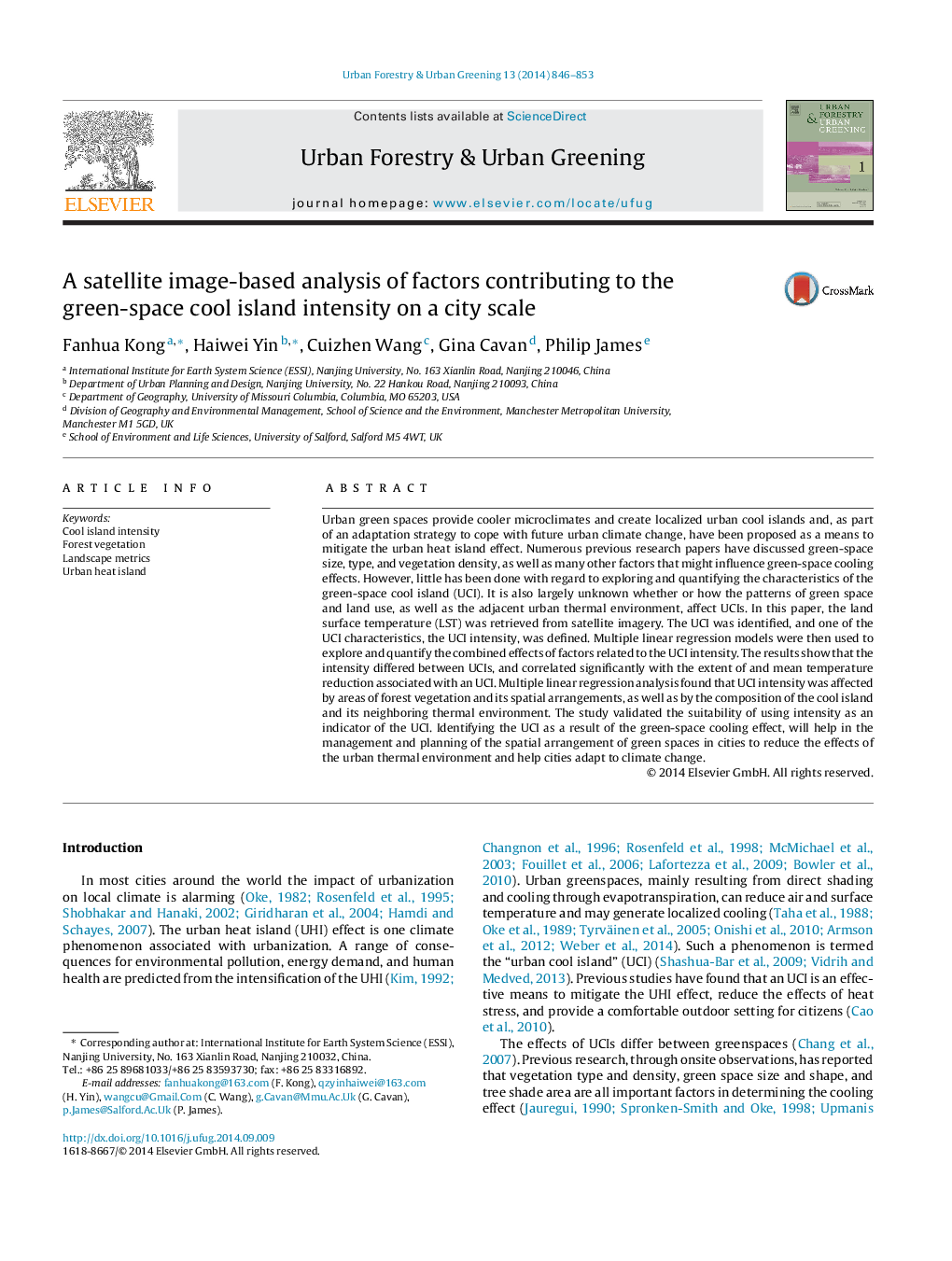| Article ID | Journal | Published Year | Pages | File Type |
|---|---|---|---|---|
| 10252188 | Urban Forestry & Urban Greening | 2014 | 8 Pages |
Abstract
Urban green spaces provide cooler microclimates and create localized urban cool islands and, as part of an adaptation strategy to cope with future urban climate change, have been proposed as a means to mitigate the urban heat island effect. Numerous previous research papers have discussed green-space size, type, and vegetation density, as well as many other factors that might influence green-space cooling effects. However, little has been done with regard to exploring and quantifying the characteristics of the green-space cool island (UCI). It is also largely unknown whether or how the patterns of green space and land use, as well as the adjacent urban thermal environment, affect UCIs. In this paper, the land surface temperature (LST) was retrieved from satellite imagery. The UCI was identified, and one of the UCI characteristics, the UCI intensity, was defined. Multiple linear regression models were then used to explore and quantify the combined effects of factors related to the UCI intensity. The results show that the intensity differed between UCIs, and correlated significantly with the extent of and mean temperature reduction associated with an UCI. Multiple linear regression analysis found that UCI intensity was affected by areas of forest vegetation and its spatial arrangements, as well as by the composition of the cool island and its neighboring thermal environment. The study validated the suitability of using intensity as an indicator of the UCI. Identifying the UCI as a result of the green-space cooling effect, will help in the management and planning of the spatial arrangement of green spaces in cities to reduce the effects of the urban thermal environment and help cities adapt to climate change.
Related Topics
Life Sciences
Agricultural and Biological Sciences
Forestry
Authors
Fanhua Kong, Haiwei Yin, Cuizhen Wang, Gina Cavan, Philip James,
